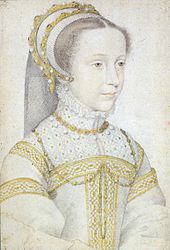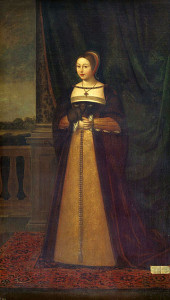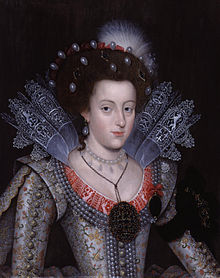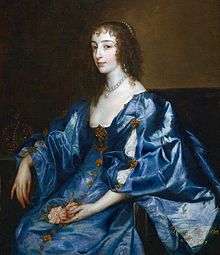Tag: Tudor
HistoryPop: S03E02 – Six

HistoryPop: S03E01- SIX

I saw a tweet today…
You know it’ll all end well when that’s how I open a post. I saw a tweet today that featured a portrait of James VI/I of Scotland and England. While that is all well and good, and I am very glad that he got a bit of publicity today, the author of the tweet continued on that it was he who first thought to bring the two nations together under one monarch.
James was particularly fond of the idea of a “Great Britain,” and while he did unite the two nations (of course along with Wales and Ireland) under one crown when he ascended the throne of England in 1603, he was not the first monarch of the Isle to take action with that end goal in mind. The ascendancy of the Stewarts was the inverse of the fortunes of the Tudors, whose last monarch, Elizabeth, passed her crown on to James. The first Tudor king, though, Henry VII, also held dear the dream of a united kingdom of Great Britain. Why else, would one imagine, he marry his eldest daughter, Margaret, not to the French, the Spanish, or a German prince, but to the Scottish King? Any of their future children would carry the blood of both the Tudors and the Stewarts, bringing the two dynasties an intimate connection which later came to fruition with James VI.
Without the ambition of Henry VII, there would not have been a Stewart claim to the English throne, or at least as legitimate as the one James possessed through his descent from Margaret Tudor.
Of course, there had been marriages between the royal families of Scotland and England before, such as the marriage of Joan Beaufort and James I, but she was not the daughter of a ruling monarch, she was only his half-niece. She did, however, have royal blood and was a descendant of Edward III through her father’s line. Another example of the English royals marrying into the Scottish ruling family occurred much earlier, with the marriage of Joan of the Tower, the youngest daughter of Edward II and Isabella of France to David II of Scotland (the House of Bruce). Margaret of England, daughter of Henry III and Eleanor of Provence, married into the Scottish royal family by her marriage to Alexander III. Joan, a daughter of John of England, married Alexander II. I could go on, but the point is adequately made.
Marrying into the Scottish royal family wasn’t a new idea in by Henry VII’s time, actually, it seems to have been almost a traditional practice (especially if one had a daughter named Joan!). Henry VII, though, hoped to have Scotland under his thumb more directly by having his eldest daughter marry her King, whereas most of the aforementioned marriages were between Scottish monarchs and younger daughters of English monarchs. In an interesting turn of events, it was not Scotland under England’s rule, but England under the rule of a Scottish king that brought together the two nations in a more peaceful manner than had been experienced previously. The Wars of Scottish Independence had, for a time, brought both nations together, but in a forcible manner, unlike that which passed under James VI.
This is particularly important to remember, especially tonight, when the Scottish people are voting in the largest referendum to date in their history. Scotland has a proud and vibrant history, and it is because of that history that the citizens of Scotland are voting tonight.
I cannot make any claim as to how I want to see this turn out. I certainly have my own opinions, but it is up to the Scots, tonight, to decide for themselves. I just hope that they remember how it wouldn’t have been the United Kingdom without a Scottish monarch to bring it all together (even if it had been an aim of the English monarchs for centuries before it actually happened).
“And I Will Make Them One Nation.”
This BBC programme, all about how the Stewarts led the century that set up England, Scotland and Ireland to become Great Britain, is a highly watchable and accessible piece of work by Dr. Clare Jackson, of Cambridge University.
 (Mary, Queen of Scots as a young girl)
(Mary, Queen of Scots as a young girl)
“The Stuarts” BBC Programme Link
In it, she starts of telling the story of James VI and his impeccable lineage, descended from not only the Scottish Stewarts, but also the Danish royal family (Through Margaret of Denmark), and, more importantly, the English royal family (through his paternal great-grandmother, Margaret Tudor). He had apparently always felt that he would unite the crowns and kingdoms of England and Scotland under one man, himself. Dr. Jackson then takes us through his efforts to legally unite the two nations, but for James, to no avail.
 (Margaret Tudor, daughter of Henry VII and Elizabeth of York)
(Margaret Tudor, daughter of Henry VII and Elizabeth of York)
What was curious for me, and I was glad to see it, was that she had also paid attention to Henry Frederick, James’ eldest son and Prince of Wales. In many texts, his life tends to be glossed over a bit as it wasn’t he, but his younger brother Charles, who succeeded their father as King. This was due to a premature death at the age of 18. From there, Dr. Jackson goes into the story of Charles as Prince of Wales and his incredible journey to Spain. She supposes that much of his style of kingship was influenced by his time there as a guest of King Philip IV. His love of pageantry and his insistence on ceremony may also have been influenced by Philip’s court.
 (Elizabeth Stuart, the Winter Queen, daughter of Anna of Denmark and James I)
(Elizabeth Stuart, the Winter Queen, daughter of Anna of Denmark and James I)
She concludes the episode after explaining how Charles came to be king, married a French princess, the Catholic Henrietta Maria, and the struggles he faced over religion with Scotland.
 (Henrietta Maria, queen consort to Charles I)
(Henrietta Maria, queen consort to Charles I)
All in all, this episode is a fabulous bit of history and it was quite enjoyable to watch! The only thing that was frustrating to me, really was the lack of Queen Anna. Her name was mentioned exactly once. That was in reference to the death of Henry. Was Anna’s influence as queen consort not felt more than just the death of her son? Wasn’t she a partner in the creation of the legacy of the Stuart dynasty? She spent 14 years in Scotland with James before they took England by storm in 1603. She then spent 16 years as Queen of England before her death in 1619. It seems as though she was shunted to the side, ignored. Henrietta Maria got her portrait on the screen and the mention about how she was Catholic. There is evidence to support a supposition that Anna converted to Catholicism, so wouldn’t that conflict between her and her strongly Protestant husband make for an interesting bit of monologue?
What seems to be forgotten, at least so far, is the story of the women of the Stewart/Stuart dynasty. Brief mention of Mary, Queen of Scots, Margaret Tudor, Elizabeth Stuart, Henrietta Maria, and even less for Anna. Perhaps this will be discussed in the future two episodes set to air? If not, then I hope there will be material on the programme’s website dedicated to these women. (Anna’s not even mentioned in the “The early Stuarts: marriage is power” page!) I think that focusing on the monarchs makes for good TV, but including the consorts and daughters makes for good history.

